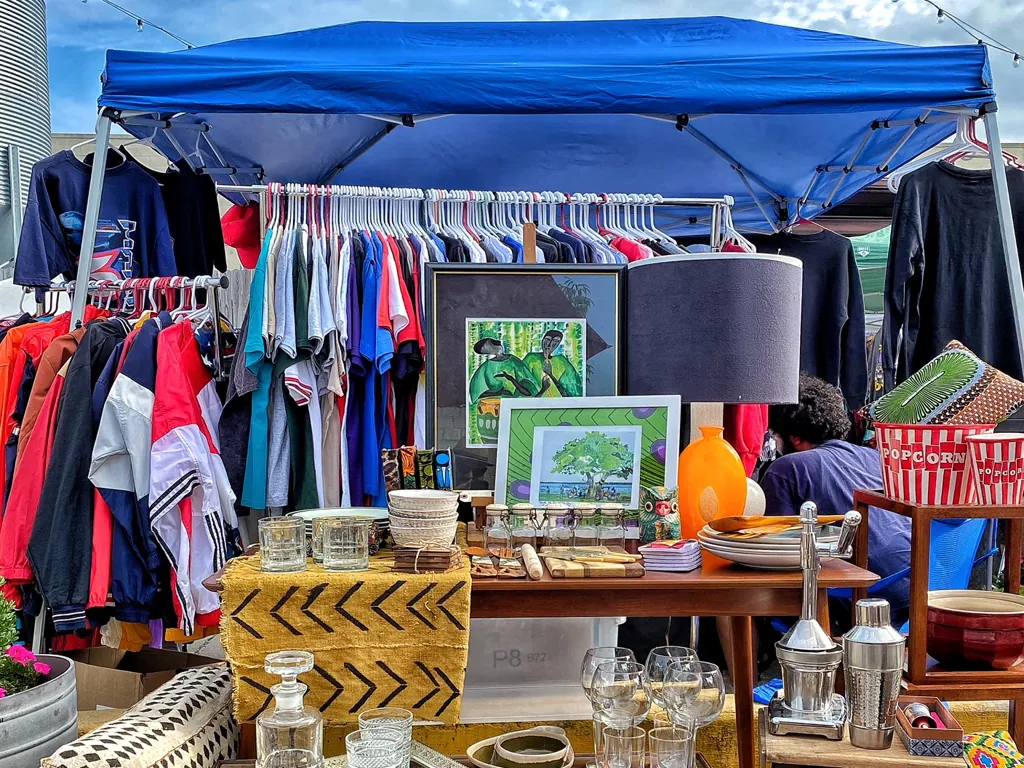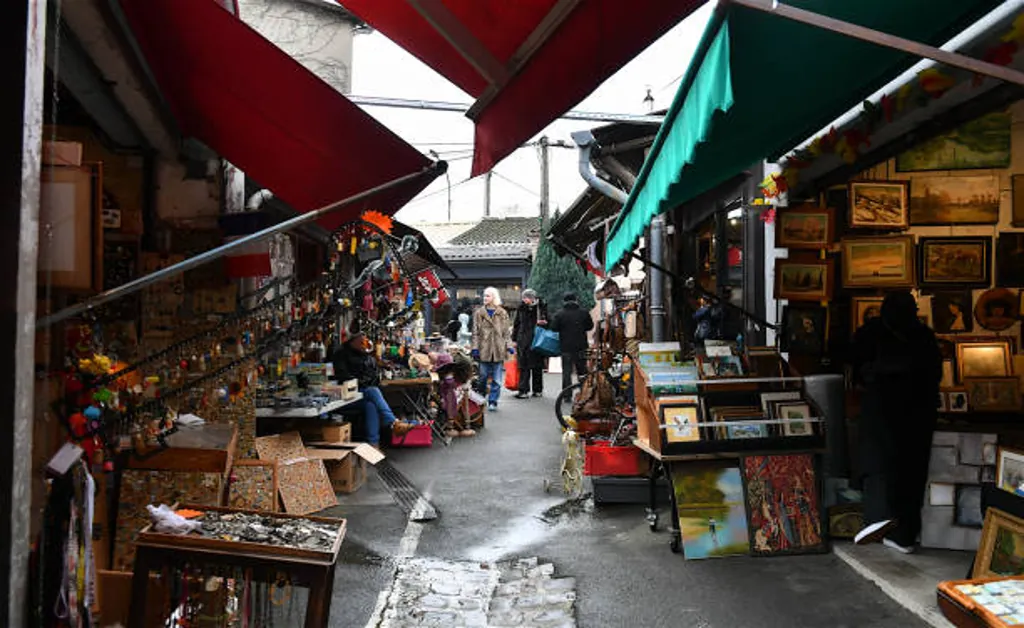Flea markets have always been a fun place to find cool things. People go there to shop, collect, and enjoy the day. You’ll see old clothes, handmade goods, old furniture, and tasty food. These markets draw big crowds looking for something special. And they love the lively feel too.
As more people come to these markets, running them well becomes a big deal. If the market is messy or poorly planned, people won’t come back. But if it’s smooth and fun, it keeps growing.
Running a new market? Or fixing one that’s been around a while? Either way, managing it the right way matters a lot. This post shares simple steps to help you do that. We’ll go over how to plan, promote, work with vendors, and give customers a great time.
Table of Contents
Toggle1. Pre-Planning: Setting Up Your Flea Market
Before the first booth is pitched or a flyer distributed, strategic planning lays the groundwork for a well-run flea market.
Define Your Niche & Target Audience
Every successful flea market has a clear identity. Are you curating a market for vintage lovers, handmade artisans, second-hand goods, collectors, or food enthusiasts?
Choosing a niche helps:
- Attract the right vendors and customers.
- Establish your market’s reputation.
- Create targeted marketing strategies.
Pro tip: Consider conducting a local survey to determine what your community would like to see.
Choose the Right Location
Location is everything in flea market management. Look for a space that offers:
- High foot traffic and visibility.
- Easy accessibility for pedestrians and vehicles.
- Adequate parking for vendors and shoppers.
- Compliance with zoning laws and permit requirements.
Popular location choices include school grounds, fairgrounds, parking lots, or even vacant lots (with permission).
Set a Date & Frequency
Will your flea market be weekly, monthly, or seasonal? Choosing the right frequency depends on vendor availability, demand, and weather conditions.
For best results:
- Avoid dates that conflict with other major local events.
- Set a consistent schedule to build a loyal customer base.
Budgeting & Funding
Proper budgeting ensures you stay profitable while delivering a great experience. Your flea market budget should account for:
- Vendor fees (your main income stream).
- Permits & insurance.
- Marketing and promotion.
- Security, equipment, and sanitation services.
Consider sponsorships or partnerships with local businesses for additional funding.
2. Vendor Management & Recruitment
Your vendors are the heart of the flea market. Managing vendor relationships professionally will improve both quality and consistency.
How to Attract Vendors
To fill your stalls with quality sellers, promote your flea market using:
- Social media campaigns (Instagram reels, Facebook groups, TikTok).
- Local advertising in newspapers, magazines, and bulletin boards.
- Partnerships with artists, crafters, or second-hand store owners.
- Vendor referral programs to encourage word-of-mouth.
Vendor Contracts & Fees
A clear and fair vendor agreement is essential. Your contract should cover:
- Booth size and setup rules.
- Vendor fee structure and due dates.
- Cancellation and refund policies.
- Operating hours and liability clauses.
Set vendor fees based on your location, audience size, and market frequency.
Diverse Vendor Selection
Offer a well-rounded shopping experience by curating a mix of:
- Vintage/antique sellers
- Handmade crafters and artists
- Food vendors
- Collectibles and novelty items
Avoid oversaturating one category to maintain balance.
3. Marketing & Promotion Strategies
Attracting foot traffic is a top priority. Effective flea market promotion requires a strong online and offline presence.
Social Media & Online Presence
Leverage platforms like:
-
Facebook Events for RSVPs and updates.
-
Instagram and TikTok for behind-the-scenes content.
-
Google My Business for location visibility.
-
Your own website with dates, maps, vendor lists, and contact info.
Use relevant hashtags like #fleamarket, #localvendors, #vintagefinds to expand reach.
Local Advertising
Don’t underestimate traditional methods:
- Post flyers and posters in cafes, libraries, and community centers.
- Use radio spots or newspaper ads.
- Team up with schools and nonprofits for mutual promotion.
Email Marketing & Newsletters
Keep vendors and loyal shoppers informed with:
- Event reminders and market schedules.
- Exclusive previews of special items or vendors.
- Coupons or early access promotions.
Collect emails on-site and through your website or social pages.
Special Events & Promotions
Make your flea market unforgettable by adding:
- Themed market days (e.g., Halloween Flea, Retro Sunday).
- Live music or entertainment.
- Family-friendly activities.
- Discounts, giveaways, or vendor raffles.
4. On-Site Operations & Logistics
Efficient on-site management ensures smooth operations and happy participants.
Layout & Booth Allocation
Plan your flea market layout with flow in mind:
- Group similar vendors together.
- Place high-interest vendors near entrances or food stalls.
- Leave wide walkways for comfortable browsing.
Reserve premium booth spots for sponsors or top-selling vendors.
Signage & Navigation
Clear signs are crucial for:
- Vendor booth numbers.
- Restrooms, first-aid stations, and exits.
- Food truck zones or seating areas.
Offer printed and digital maps if the market is large.
Security & Safety Measures
Protect your vendors and visitors with:
- On-site security staff.
- First aid kits or medical tents.
- Emergency exits clearly marked.
- Theft prevention protocols (vendor ID tags, surveillance cameras).
Waste Management & Cleanliness
Ensure a clean environment with:
- Adequate trash bins and recycling stations.
- On-site cleanup crews.
- Vendor policies for trash disposal.
This enhances the customer experience and maintains good relations with the venue.
5. Customer Experience & Engagement
A memorable flea market is one where customers feel welcomed, entertained, and inspired to return.
Friendly & Helpful Staff
Have clearly identifiable staff available to:
- Provide information and directions.
- Assist with lost and found or emergencies.
- Answer questions about vendors or services.
Use volunteer groups or local students as extra hands.
Entertainment & Amenities
Add to the market’s atmosphere with:
- Live music or street performers.
- Food trucks or snack stalls.
- Seating areas and shade structures.
- Kids’ play zones or workshops.
These features encourage longer visits and increase spending.
Feedback & Improvement
Actively gather insights by:
- Distributing customer feedback forms.
- Running Instagram or Facebook polls.
- Asking vendors for post-event reviews.
Use this input to evolve your flea market for future success.
6. Financial Management & Growth
To grow sustainably, treat your flea market like a business.
Tracking Revenue & Expenses
Monitor:
- Vendor payments
- Ticket sales (if applicable)
- Sponsorship revenue
- Event expenses (advertising, utilities, staffing)
Use spreadsheets or flea market management software like Marketspread or ManageMyMarket.
Scaling Your Flea Market
As your market gains popularity, consider:
- Increasing vendor count and variety.
- Adding more food trucks, live performances, or DIY booths.
- Hosting night markets or seasonal festivals.
Explore nearby towns or pop-up markets to expand your brand.
Building Long-Term Success
Create a loyal community by:
- Rewarding repeat vendors with discounts.
- Offering customer loyalty programs.
- Prioritizing positive word-of-mouth and community reputation.
Happy vendors and shoppers are your best marketing assets.
7. Common Challenges & Solutions
Running a flea market isn’t always smooth sailing. Here’s how to handle common issues:
Low Foot Traffic?
- Reassess your marketing efforts.
- Partner with local influencers or community leaders.
- Add entertainment and themes to attract diverse crowds.
Vendor No-Shows?
- Require deposit fees to confirm spots.
- Maintain a waitlist of eager vendors.
- Send reminders and confirmations ahead of time.
Weather Issues?
- Use canopies, tents, or umbrellas for rain or sun.
- Rent indoor venues during the winter.
- Have a clear rain date policy in vendor contracts.
Looking for inspiration or planning a visit? Explore some of the most popular flea markets in cities like Austin, Canada, Brooklyn, and Florida to see how different regions run their unique, vibrant marketplaces.
FAQs
Q1: How many vendors should a flea market have?
A: This depends on your venue size. Small markets may have 20–30 vendors, while larger ones host over 100. Balance variety with space.
Q2: What permits do I need to run a flea market?
A: Typically, you’ll need a vendor permit, event permit, food handling license, and liability insurance. Check with your local city office.
Q3: Can I make a profit running a flea market?
A: Absolutely! With smart budgeting, vendor fees, sponsorships, and efficient management, flea markets can be both enjoyable and profitable.
Q4: How do I handle difficult vendors?
A: Address issues with professionalism. Refer to your vendor agreement, offer conflict resolution, and remove repeat offenders if needed.
Conclusion
Running a successful flea market requires more than just tables and tents—it takes planning, people skills, creativity, and consistency. From selecting the right location and attracting vendors to promoting your market and enhancing customer experiences, each step plays a critical role.
Ready to launch your flea market? Start planning today! With the tips and strategies in this guide, you’ll be well on your way to building a thriving community event that people love returning to again and again.



